(Psst: The FTC wants me to remind you that this website contains affiliate links. That means if you make a purchase from a link you click on, I might receive a small commission. This does not increase the price you’ll pay for that item nor does it decrease the awesomeness of the item. ~ Daisy)
Looking good can have an impact on how you feel. However, when you’re on a budget it can be hard to justify spending on your appearance. Do you want beautiful locks yet don’t can’t spend a million dollars? Or are you spending on your hair and wish you didn’t “have to”? Here are some tips to save big while having great hair that you love.
Review your shampoo frequency.
One way to save money on your hair is to reconsider what products your use to wash your hair and how frequently you do it.
The average person in North America showers something between six and nine times per week. We put a priority on being clean. However, medical science is now uncovering more and more information that this is not good for our health. We now understand that our skin (and therefore, our scalp) is home to a diverse number of living beings (bacteria, viruses, yeast, even mites!). When we use harsh chemicals daily on our skin and scalp, we are not only removing any dirt, but also the natural environment required for our skin microbiome.
Here is some advice regarding shampoo frequency from Dr. Amy Meyers: “For your hair, every third day is fine for most people because what you’re really washing is not just hair, it’s also the skin microbiome of your scalp.”
People with very curly hair are often recommended not to use shampoo at all. This was the recommendation of my former hair stylist, who specialized in cutting hair for people with curly hair. People used to travel from all over to be in his studio. He recommended a massage of the scalp with conditioner and then a rinse. Using this method, you may be able to stop buying shampoo altogether. If that’s not for you, you may be able to reduce your spending on shampoo significantly. Why not give it a try? It will be good for the health of your skin microbiome on your scalp, too!
Consider dry shampoo once in a while.
People with very light, fine hair face more challenges with hair maintenance, as their hair is easier weighed down by excess oils. If you are reducing your consumption of shampoo and want to try another method to maintain your hair, you may benefit from dry shampoo.
You can simply take a small amount of corn starch and work it into your scalp area where the oils accumulate. Then, shake it out over a sink and use a brush, if necessary to get the rest out. Corn starch is very inexpensive. You can find it in the baking aisle of most grocery stores, or in a bulk food store.
Trying a dry shampoo in between regular shampoos to again reduce your use of regular shampoo may be an alternative to turn to as well.
Going with what nature gave you…
Chemicals of any kind can affect our body, even through our hair. This includes hair dyes and straighteners (chemical and heat-based), both of which are very hard on hair. Women, in particular, face pressures related to what their hair looks like and the requirement to always try to look young. For women, spending to dye and regularly cut their hair at a salon, this can be a substantial expense. For someone willing to do the work at home, you are saving money, but still spending at least $50 every month or so.
You can help your hair’s health and your pocketbook by going with what nature gave you. Only you can determine whether you feel that you are using chemicals on your hair due to external pressures of society. If this is the case, how would it feel to let go of the values of others and free your hair to be just exactly what it is? Maybe you could give it a try…you could always go back if you don’t like it.
For myself, I used to spend an enormous amount of money on my hair (cut and highlights) when I lived in the big city. Slowly, after I met my stylist who specialized in curly hair, I started going more and more natural with my hair. Now, it is what it is – somewhat grey, somewhat blonde, somewhat in between. However, it is very healthy. I feel a great deal of freedom and happiness with the fact that I am satisfied with where my hair is now. I am in my early fifties and won’t go back.
Trade or barter for natural hair care.
My new stylist is a good friend of one of my closest cousins. As a result, I always get a super low price on my cuts. However, I don’t like to let any good deed go unrewarded. I often bring in some of my “famous” jams and preserves for him to thank him for his great prices.
You might know a rural stylist who works out of her home. What does she need? Is there something she might be interested in trading for? Are you web savvy and feel you could help out a local stylist get more clients? Maybe you could trade for cuts. You’ll never know if you don’t ask!
Use natural homemade hair care products.
I always thought of apple cider vinegar as a food. However, many years ago, a friend recommended it as a hair rinse. It is amazing, giving your hair a lovely, soft texture. There is some science to this, too. Here, we go back to the harsh chemicals in many hair care products and their negative effect on our skin microbiome:
“Most of the products on the market today strip hair and skin of its natural oils. This causes dryness and can even cause dandruff! But the acidity found in apple cider vinegar can stop that process by balancing your scalp and hair’s natural pH levels. In fact, these acids and enzymes in ACV can kill bacteria, which can cause many scalp and hair conditions such as dandruff, itchy scalp from eczema, hair loss, and even baldness.” [source]
If you are interested in trying this out, here is a link to a natural recipe.
By using natural hair care products, I have been able to stop using all drug store purchased hair care products. Yes, all of them.
If my hair is a bit dry, I just massage a few drops of jojoba oil onto the ends. If my hair is a bit oily, I just use a dry shampoo. If my hair gets unusually dirty in the barn, I generally just rinse it. The only time I would actually shampoo it is if it is exposed to chlorine in a swimming pool. When this happens, I just use a few drop of castile soap to wash it, and then rinse well.
Be open to the unexpected.
You might have a certain idea about how you keep your hair and how it should look. I sure did: I was sure I would never have long hair again. I had a short curly cut that I thought was flattering. However, I did need fairly regular cuts to maintain it…and then the pandemic struck!
Unable to get my regular cuts, I nervously grew my hair out, and am continually surprised with the frequency of compliments I’m getting on it. As well, I just started back at studying ballet, and am delighted to have a perfect ballerina bun for my online ballet lessons!
If I had stuck to my hair ideas before the pandemic, I would not be enjoying my new surprise “do.”
Hair we go!
Natural hair care is a perfect example of where less is more. Could you see yourself trying any of the thrifty tips offered here? Do you have one you can share with us? Please tell us in the comments below.
Be sure to check out our take on how to make natural skin moisturizer as well!
About Colette
Colette is passionate about sharing her knowledge of thrifty living and self-sufficiency. She has developed her skills in self-reliance living in the suburbs, the city, and more recently, on her own Half-Acre Homestead. Colette lived five years completely off-grid and without running water in an eight by 24 foot tiny home while designing and building her own 18 by 24-foot eco-cabin. She has just launched her website, Half Acre Homestead. Colette invites you to stop by and visit this work in progress! Coming soon in 2022 is her exciting new online program. Interested in Resiliency, Preventative Health, and Self-Sufficient/Off-Grid Housing (to name a few!)? Stay tuned for more details!
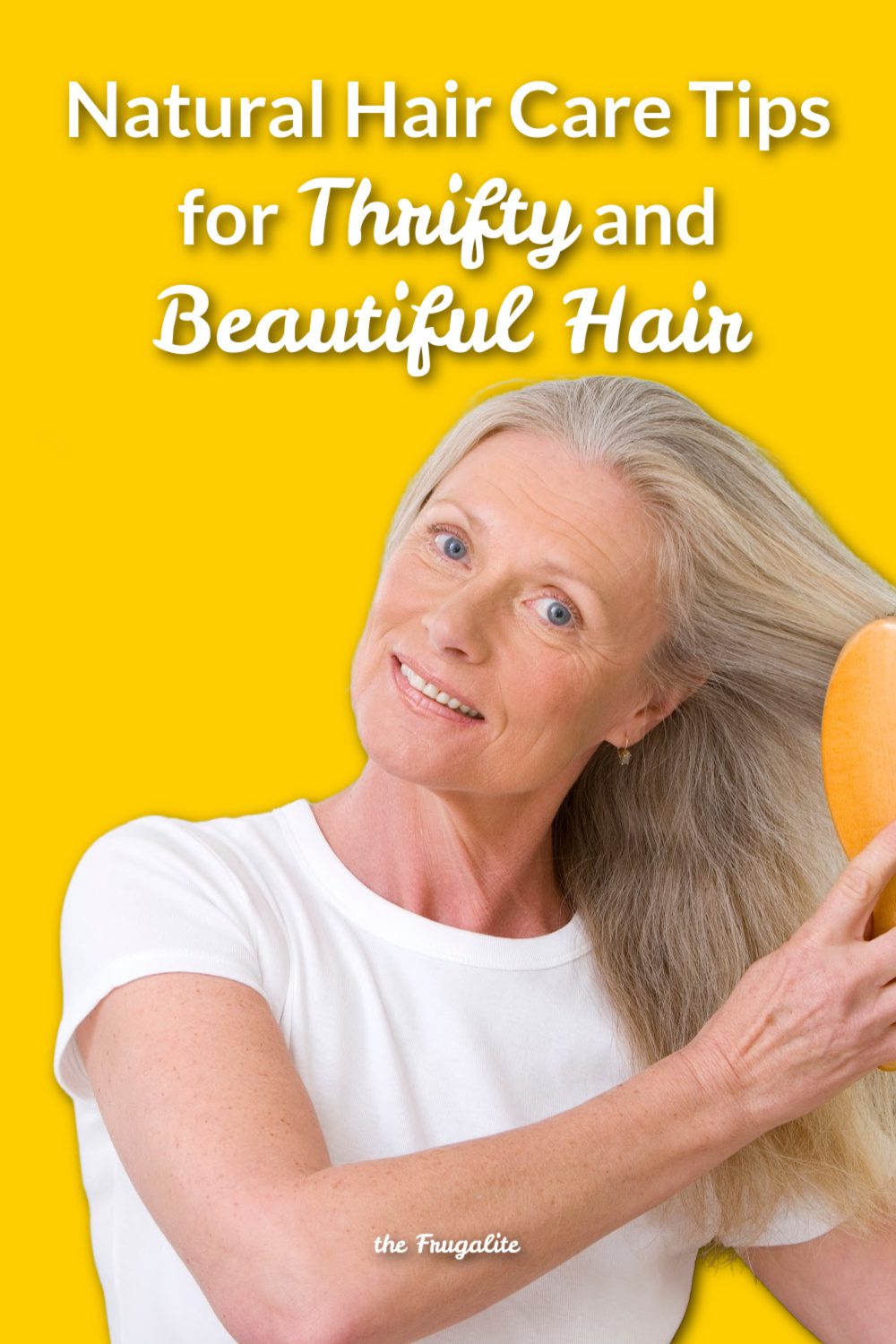

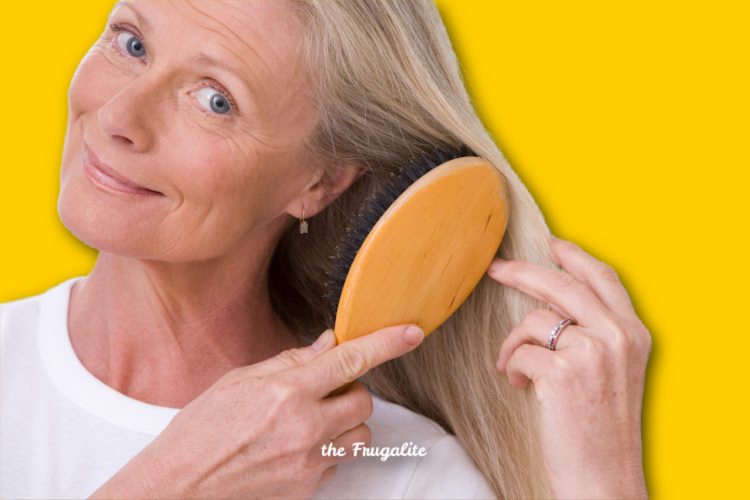


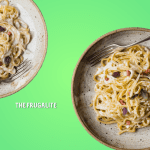

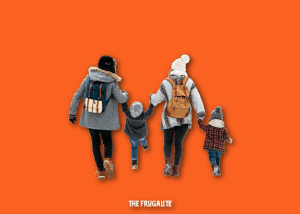

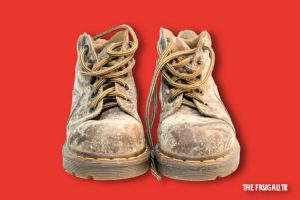
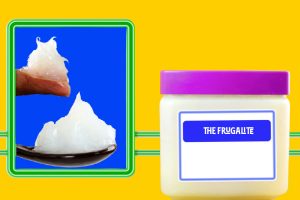

6 thoughts on “Natural Hair Care Tips for Thrifty and Beautiful Hair”
I’m 72 and have learned to live with my baby fine, straight hair (the opposite of yours!).
I shampoo every other day with a product containing both shampoo and conditioner. In the summer I use regular shampoo that I buy at the dollar store with vinegar as a rinse. I found a woman at a cheap salon that knows how to cut my hair for $12 a month. I have it cut rather short as my hair quickly grows. Washing my hair before I go and not having her blow it dry keeps costs down. I go home and style it myself.
I use no products except hair spray, also bought at the dollar store. I wish I had all the money I spent on hair products that only lasted about 2-3 hours after use. Big waste of money. “But the advertising said….” Oh, balderdash. Products are designed to take my money from my pocket and put it into the corporation’s accounts.
I’m lucky that I am not gray yet, so I do not have to color. Even when it happens, I probably won’t spend the money.
People have told me how much they love my hair and what is the secret? I smile and tell them that less is more, and keep it stupid simple.
Hi Marie, I loved your comments! How wonderful that you get so many compliments on your “less is more” styling. I’m so happy that you shared your success with a thrifty hair care routine. I agree that many of these products are money grabs. Good for you for making your own choices, to your benefit, too. How liberating!
I have salt and pepper short curly baby fine hair. I cut it myself. Wash just once a week with a mild shampoo and a use a good hair rinse. An ethnic curl enhancer cream and a dab of gel are rubbed into wet hair. Scrunch it with my fingers as it dries. When dry comb as desired. Easy care and easy styling. Turning 75 this week. Looks better short than long on me. I’m white not black, but the curl enhancer for ethnic curls works the best to keep my hair looking shinny and healthy all week. I’ve tried lots of things over the years. My hair and skin tend toward being quite dry. My daily skin moisturizer is a few drops of glycerine mixed into 2 squirts of hand lotion and patted onto my face, neck, hands and arms. Legs also get that mixture right after a shower. An inexpensive routine that works well for me.
Hi Clergylady, It sounds like your have found the perfect thrifty hair care routine for your curly fine hair. I’m so impressed that you cut your own hair! I would not have the nerve nor the ability! I once tried to buzz cut my friend’s hair and did such a bad job he had to go to the barber to get it fixed. That is a great tip for all curly haired people that an ethnic curl enhancer could be helpful. I bet it is much better priced than some of the drugstore curl products, too. Thanks, too, for your tips on thrifty moisturizers for dry skin. Thanks so much for sharing!
I love these ideas. I only have a little bit of gray but covered it religiously until I moved to Mexico for a year. Then, I was in the ocean and out in the sun every single day and a color only held up for a couple of weeks. So I stopped coloring completely. My daughter went to hair school so she gives me a trim when needed. I have long, thick, wavy hair and rarely use any heat elements on it, aside from straightening my bangs with a blow dryer. I’m 52 but I still love the barefoot hippie look of long wild windblown curls.
Hi Daisy, What an interesting story about how your international travel contributed to a change in your hair care routine! I have seen your long wild windblown curls in a wonderful photo your posted about enjoying driving with the music up and the windows down! Here’s to au naturel!!!!